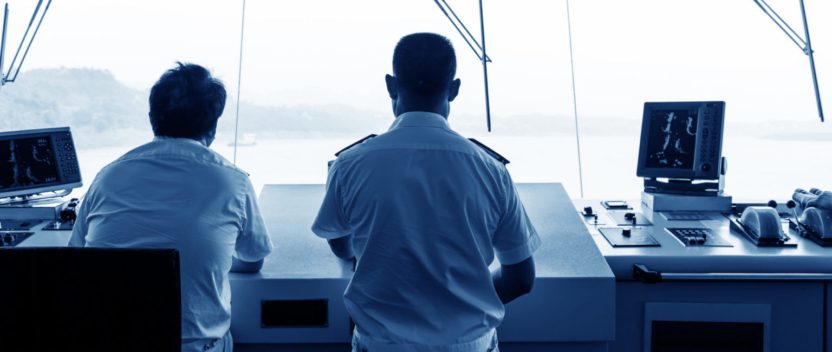Out of sight, not out of touch
Seafarers and ship captains in particular, have traditionally sought to be masters of their own destiny. In the latter’s case, with legal responsibility for ship, cargo and crew, the feeling has long been that the less interference from the shore the better. Even when the superintendent ‘running the ship’ is a former mariner, the inference is that the ‘salties’ can do without well-intentioned meddling.
It’s a mindset that – while perhaps less common now than 10 years ago – puts the shipping industry at odds with almost every other business on the planet, where connectivity is perceived as a value-add, a benefit rather than a cost.
But shippings splendid isolation, where it still exists, is under attack from the same communications revolution that has disrupted and enriched life and work ashore. Maritime broadband communications, once the preserve of the energy, cruise and high end shipping segments, is set to become a commonplace over the next 5-10 years as new satellites are launched and services unveiled that promise to bring a new degree of connectedness between ship and shore.
One of the critical planks in this new path was laid in early December 2013 when Flight 1 of Inmarsat-5, the satellite operator’s fifth generation constellation blasted off from the Baikonaur Cosmodrome and was successfully deployed into geostationary orbit.
I5-F1 is the first of up to four satellites Inmarsat will deploy at a cost of $3bn to create Global Xpress, a high speed Ka-Band VSAT satellite network covering the world’s seas and land masses. Inmarsat already enables voice and data communications to some 37,000 vessels world-wide as well as providing the Global Maritime Distress and Safety System under IMO mandate, but GX is something new.
GX is the first VSAT service from Inmarsat, utilising the Ka-Band to deliver connectivity, rather than the L-Band channel it used for all previous services. Even if one discounts the adverts and glossy brochures promising 50mbps connectivity, GX will likely bring reliable connections of 512kbps or even 1mbps to a large number of ships. Consider that the top end of the current achievable throughput is 128kbps and the advance is significant.
Inmarsat GX promises a new era of the connected ship with much improved crew and business connectivity, benefiting official and personal communications alike. The ability to transfer much more data, much faster, from ship to shore and back increases the potential for cost savings where equipment can provide its own data feed and the latest weather and chart updates can be accessed in near real-time.
However, just as in terrestrial IT, this is where things get more complicated. For many years, Inmarsat was the only game in town for shipping users, but no longer. Increased choice is creating opportunity for shipowners, but also asking questions about the degree to which maritime communications is about business process rather than simply making a phone call or sending email.
Inmarsat’s long term competitor, Iridium, plans a launch of its own new constellation of satellites to power Iridium NEXT, a service which will dramatically increase its data capabilities. Telenor Satellite Services will launch additional capacity over the North Sea to serve Norwegian and UK oil and gas businesses. Intelsat, one of the largest providers of Ku-band VSAT capacity is also planning to extend its network to include Ka-Band, competing globally with Inmarsat and offering a very dense, high speed service over the areas of strongest demand under the EPIC brand.
Inmarsat, Intelsat and Telenor, along with SES and the many re-sellers of these High Throughput Satellite (HTS) services are betting that the bandwidth revolution is an irresistible force but there are doubters. Regional player Thuraya offers a service spread from northern Europe to Asia at broadband speeds and like Iridium, is sticking with L-Band to deliver its services.
Nonetheless, all providers believe that shipping is set for a big data revolution. How quickly and whether this turns out to be more an evolution is still at issue, but the trend appears to be set. What VSAT promises is the bandwidth necessary to unlock crew communications, providing some compression and managements is included. Meanwhile the L-Band faithful continue to believe that there is a large middle ground of maritime users for whom reasonable and reliable broadband at sub 1MBPS is plenty to meet the needs of the majority.
With the leading satellite operators moving to Ka and Ku-Band, capacity is also freed up on L-Band to provider greater machine to machine services, a fact acknowledged by Inmarsat in its recent strategic tie-up with M2M specialist Orbcomm.
M2M applications have advanced significantly, from tracking and monitoring of the ship itself to systems able to gather data on individual pieces of equipment or their components and even the condition of cargo. There is still bandwidth to spare for automated data tasks such as weather routeing and chart updates.
With greater capacity available, owners and managers can finally achieve the kind of remote office communications they have been promised for years. But some question whether many owners fully understand the potential, even if the implications are clear to the IT department.
The question that this asks of the maritime industry is whether it is ready to embrace the changes that this new era of connectivity presents. The next generation of maritime regulations will be shaped around big data drawn from ships in operation, so perhaps there will be a regulatory driver.
Even without this, there are commercial incentives – including the prospect of remotely-operated or semi-autonomous ships, with minimal crew and a much greater degree of shoreside control.
Even without that leap, which strikes experienced mariners as a step too far, there is change coming that will sweep away the barriers to greater connectivity and ultimately, deliver much closer connections between ship and shore.
That will doubtless horrify as many mariners as it inspires, but either way, there is no longer any excuse for ships or shipowners to operate in the dark.


